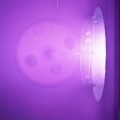NASA and the Canadian Space Agency (CSA) have just announced 18 winners in Phase 1 of their Deep Space Food Challenge. Together, all teams were awarded $450,000, meaning that each winner will receive $25,000 in total for their remarkable work in developing new, game-changing, food technologies.
The winning ideas that were selected by the judges range from a universal food fabricator, able to dehydrate plants and meats, to a device that can create foods from insect cells.
Background: Solving food issues in space and on Earth
The many food systems that are possible on Earth, unfortunately still can’t meet spaceflight demands. As space missions evolve, increasing in duration, the need to find ways to supply future crews with safe, nutritious food is at an all-time high.
At the same time, food insecurity is a big problem in either urban or rural environments on our planet. Natural disasters, for example, have a big impact on our food supply, as they disrupt supply chains and aggravate food shortages. So, there’s a big interest in discovering new technologies for food production with reduced impact on needed resources, especially in extreme environments or regions with few resources.
The Deep Space Food Challenge aims to provide future space explorers and people on Earth nutritious foods that they’ll enjoy eating, by incentivizing teams to develop new technology and systems for food products that require low input but produce safe, healthy, and palatable foods for long-duration space missions and that can also benefit the rest of the population.
Analysis: Stay safe, eat space food!
NASA and the CSA announced the Deep Space Food Challenge in January. The challenge aimed to inspire the contestants to create food production systems that met specific requirements. They needed to provide safe and healthy food choices for future space crews, while generating minimal waste and using few resources.
“For the U.S. teams, NASA’s judges grouped submissions based on the food they envisioned producing”, NASA wrote in their statement. “Among the designs were systems that used ingredients to create ready-to-eat foods such as bread, as well as dehydrated powders that could be processed into more complex food products. Others involved cultivated plants and fungi or engineered or cultured food such as cultured meat cells”.


The ideas presented on this challenge were not only focused on creating different food production options for future space crews, but also on offering alternative solutions for the people on Earth.
“These types of food systems could offer benefits on our home planet,” Robyn Gatens, director of the International Space Station Program at NASA and challenge judge, added in the statement. “Solutions from this challenge could enable new avenues for worldwide food production in resource-scarce regions and locations where disasters disrupt critical infrastructure”.
Outlook: The Deep Space Food Challenge Offers Food for thought
In the past, proposed space food systems haven’t been able to meet the complete demands of long-duration space missions. Some food options available may fill the nutrition needs of the astronauts, but may not be palatable at all. Plus, the number of resources needed to produce food for space crews is huge and can’t be provided by existing space systems.
Fortunately, this challenge brought to light a variety of possible solutions for these problems. The 18 challenge winners were recognized for their creative ideas for sustainable and reliable food systems that can generate healthy and safe meals.
Phase one of the challenge only required participants to come up with possible plans and designs for their systems. All of the winners are now eligible to compete in Phase two of the challenge (if it gets funded), in which they’ll need to build and demonstrate prototypes of the technology they proposed.
Raquel is a forensic geneticist turned freelance writer. She has a knack for technology and a passion for science. You can follow her at scitechcorner.com and on Twitter @theRaquelSantos.
